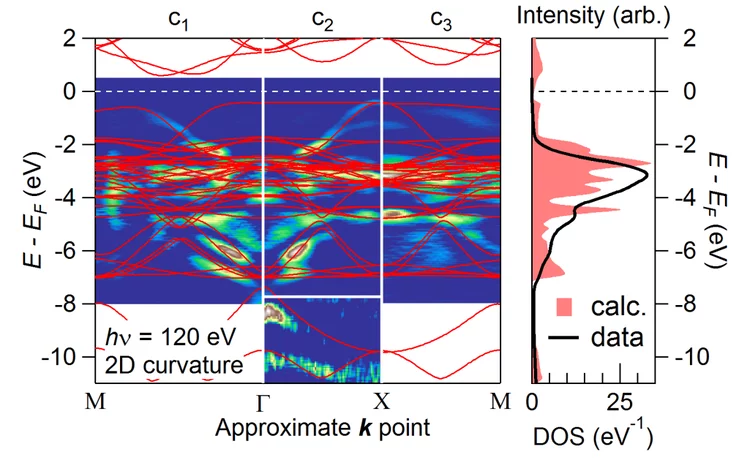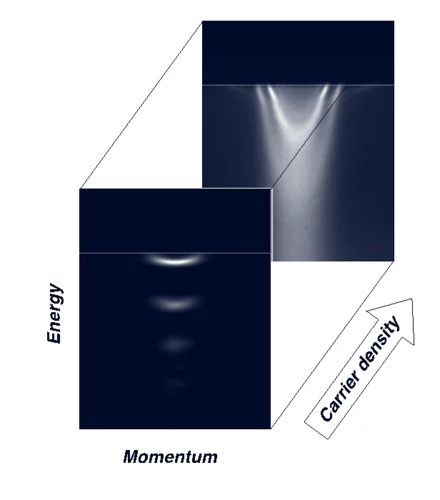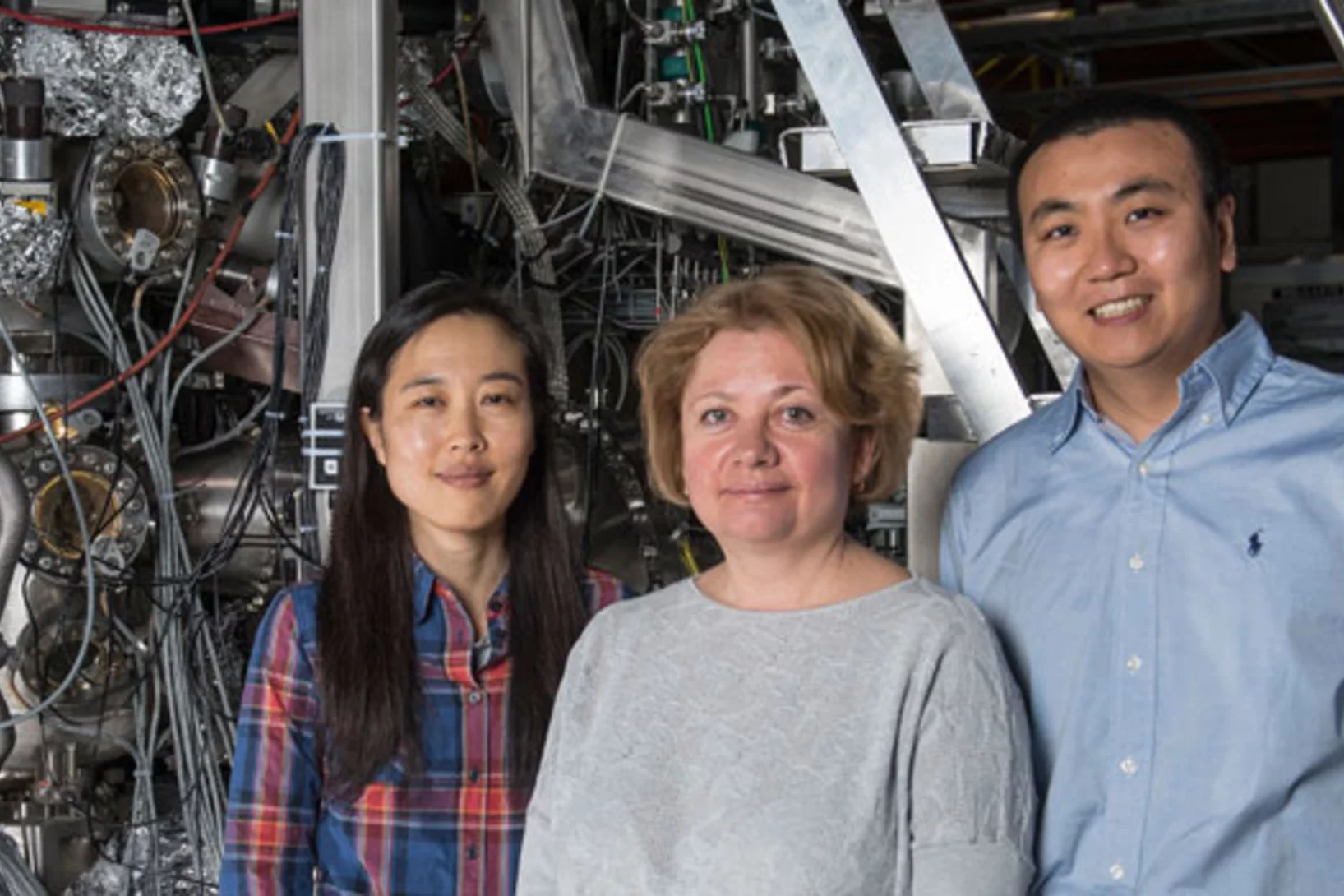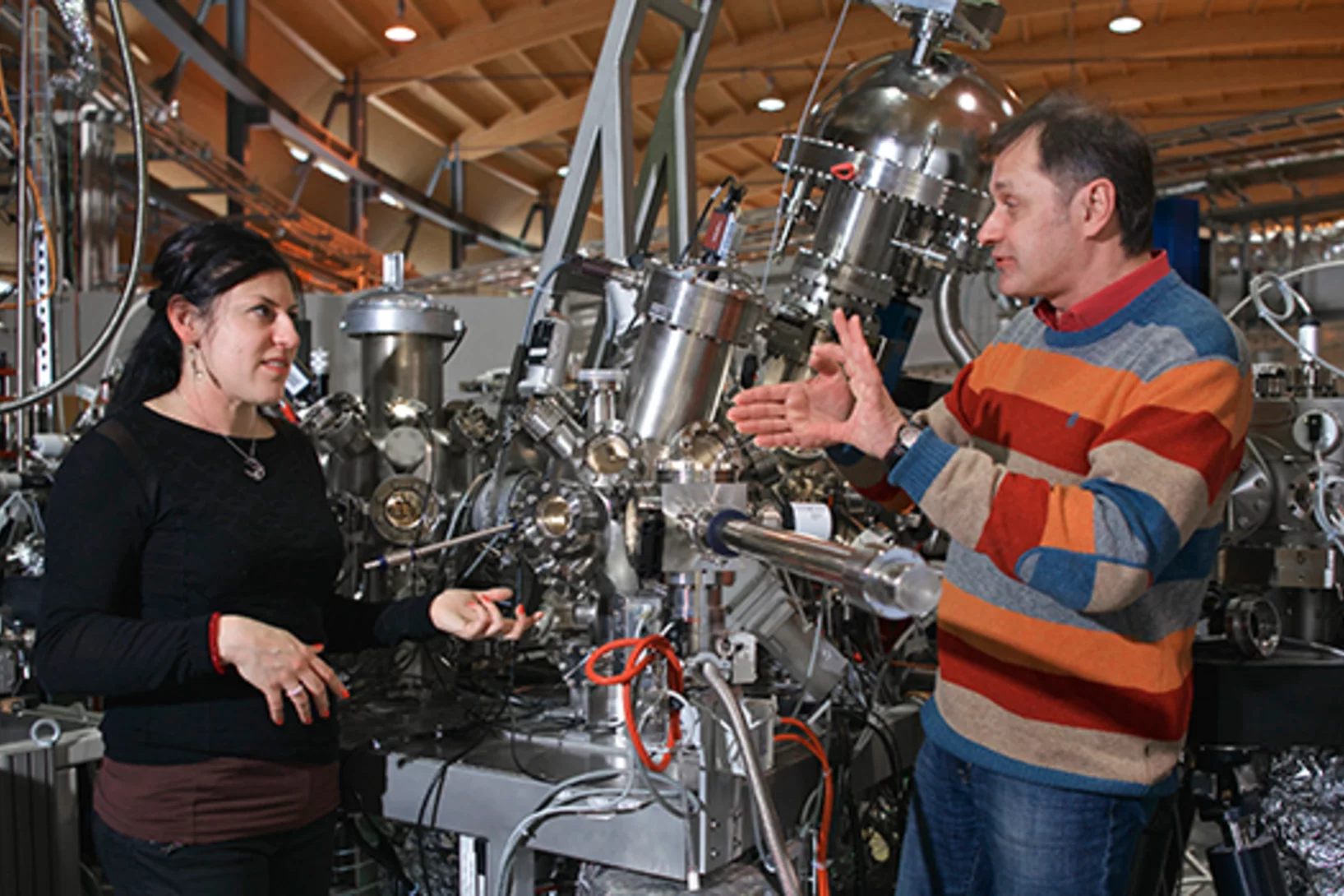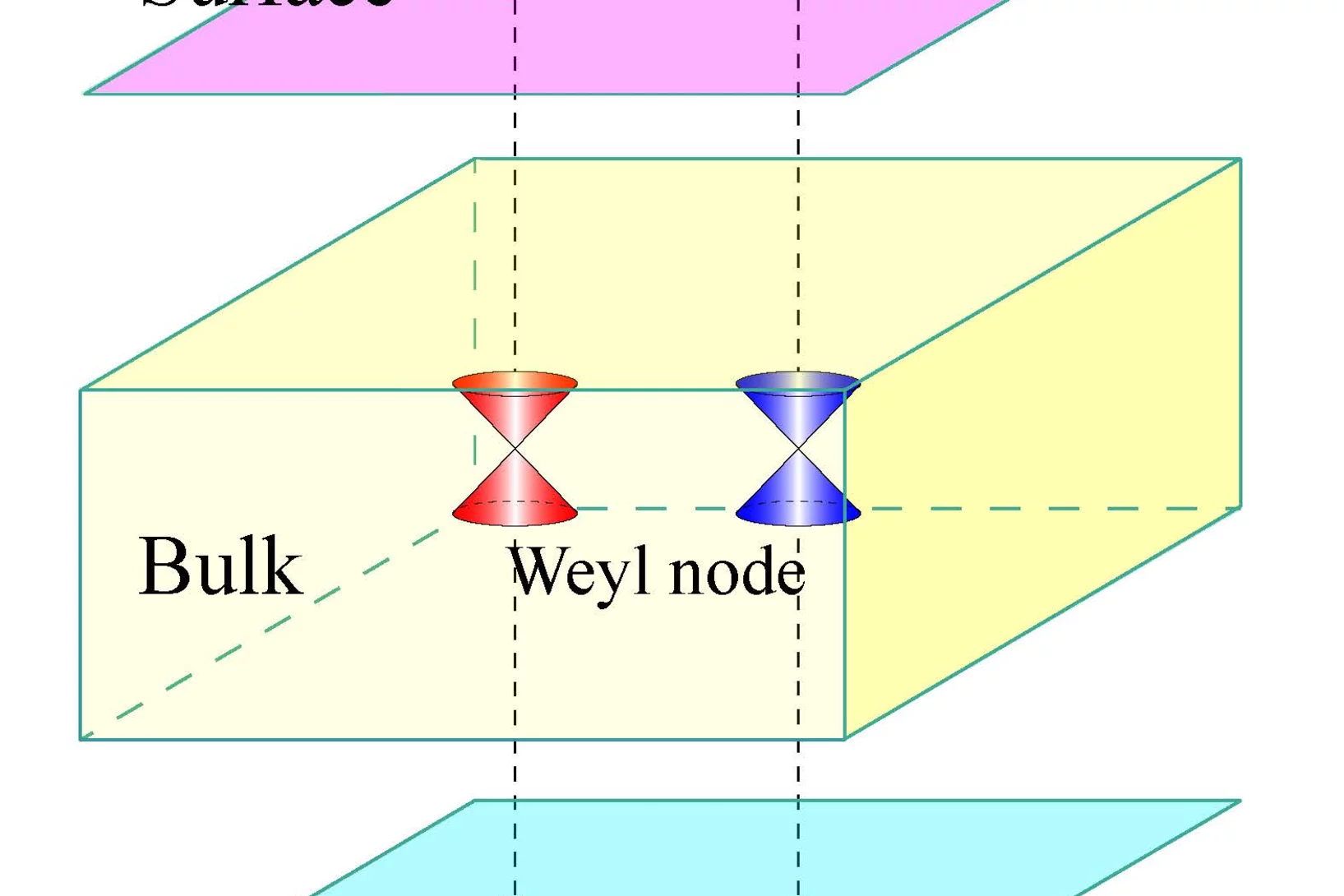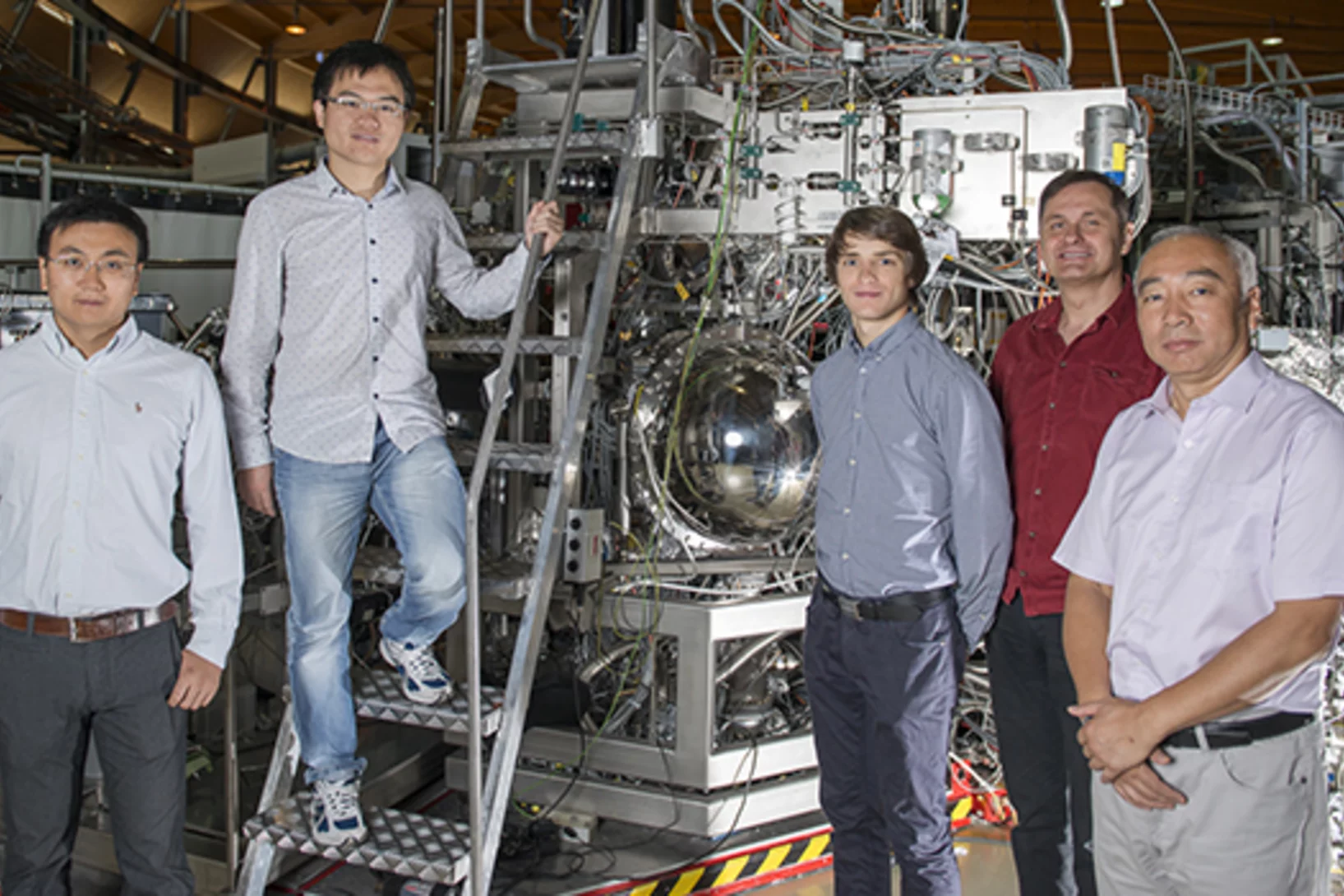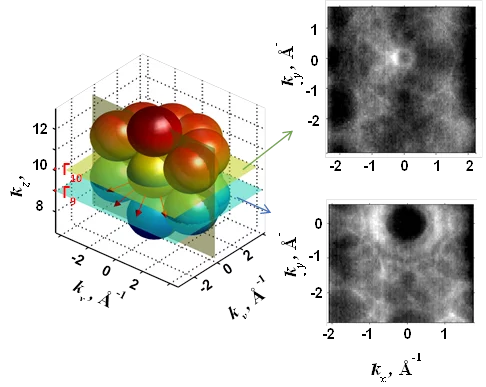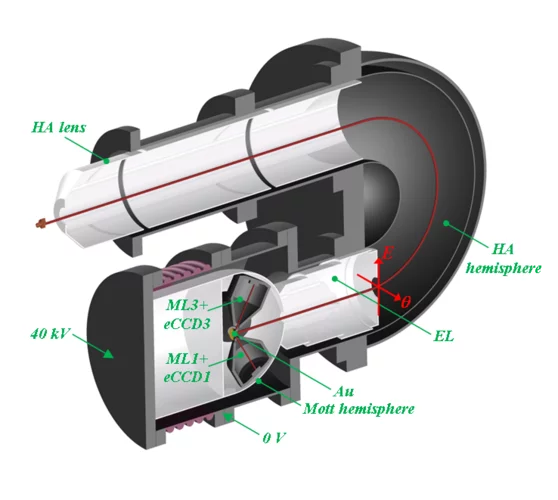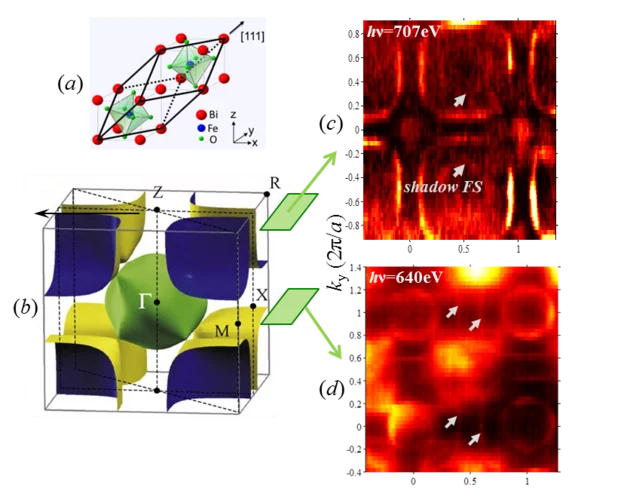Show filters
Shedding light on the origins of high-Tc superconductivity in bismuth oxides
Researchers have overcome a number of challenges in order to employ an advanced probe in the study of an unusual material, barium bismuth oxide (BaBiO3) – an insulating parent compound of a family of high-temperature superconductors known since the late 80s. In order to finally realize the experiments, the researchers grew and studied thin films of the material completely in situ under ultrahigh vacuum conditions. The results show that superconductivity in bismuth oxides emerges out of a novel insulating phase, where hole pairs located on combinations of the oxygen orbitals are coupled with distortions of the crystal lattice.
Tailoring Novel Superconductivity
The Angle Resolved Photoemission Spectroscopy (ARPES) measurements performed on 2DEL at STO surface revealed that, at low carrier density, electrons are always accompanied by a quantized dynamic lattice deformation. Together with the electron, these phonon-cloud formed a new composite quasiparticle called Fröhlich polaron.
Une nouvelle particule qui pourrait servir de base à de l’électronique économe en énergie
Le fermion de Weyl, découvert seulement l’an dernier, se déplace pratiquement sans résistance à l’intérieur de certains matériaux. Des chercheurs montrent à présent une voie possible pour l’utiliser dans des composants électroniques.
Ralentissement du flux électrique peut montrer la voie vers des ordinateurs économes en énergie
Les ordinateurs et les autres appareils électroniques représentent aujourd’hui une part considérable de la consommation d’énergie, une part dont il est pratiquement impossible de modifier l’importance avec les technologies actuellement utilisées. Les puces électroniques qui prendront place dans les appareils économes en énergie de demain devront donc être composées de matériaux innovants. De nouveaux résultats de recherche indiquent une voie possible comment on peut obtenir ces matériaux.
Observation of Fermi-Arc Spin Texture in TaAs
The study of nontrivial topological semimetals (TSM) is an emerging subject, providing a new frontier in topological aspects beyond insulators. Here, we have investigated the spin texture of surface Fermi arcs in the recently discovered Weyl semimetal TaAs using spin- and angle-resolved photoemission spectroscopy. The experimental results demonstrate that the Fermi arcs are spin polarized. The measured spin texture fulfills the requirement of mirror and time-reversal symmetries and is well reproduced by our first-principles calculations, which gives strong evidence for the topologically nontrivial Weyl semimetal state in TaAs. The consistency between the experimental and calculated results further confirms the distribution of chirality of the Weyl nodes determined by first principles calculations.
Un cousin de l’électron finalement observé au bout de 86 ans
Dans le cadre d’essais à la Source de Lumière Suisse SLS, des physiciens de l’Institut Paul Scherrer PSI dans une collaboration internationale avec des collègues de la Chine, de l’EPF Zurich et de l’EPF Lausanne ont observé une particule dont l’existence avait été prédite il y a déjà 86 ans. Cette nouvelle particule fait partie de la même famille que l’électron, le porteur de courants électriques. Contrairement à l'électron, la nouvelle particule n'a pas de masse et il n’apparaît que dans une classe particulière de matériaux qui sont dénommés des métaloïdes de Weyl.
Fermi states and anisotropy of Brillouin zone scattering in the decagonal Al–Ni–Co quasicrystal
Quasicrystals (QCs) are intermetallic alloys where excellent long-range order coexists with lack of translational symmetry in one or more dimensions. These materials have a high potential in application as a material for a solar cells, hydrogen storage applications, heat insulating layers, and others.
Concept of a multichannel spin-resolving electron analyzer based on Mott scattering
The spin of electron plays a crucial role in many physical phenomena, ranging from the obvious example of magnetism, via novel materials for spintronics applications, to high-temperature superconductivity. Spin- and angle-resolved photoelectron spectroscopy (SARPES) gives the most direct access to the spin aspects of the electronic structure, but the one-channel detection principle of all presently available SARPES spectrometers severely limits their efficiency. A team of Swiss and Russian scientists has developed a revolutionary concept of a multichannel electron spin detector based on Mott scattering as the spin selective process and imaging-type electron optics.
Fermi Surface of Three-Dimensional La1−xSrxMnO3 Explored by Soft-X-Ray ARPES: Rhombohedral Lattice Distortion and its Effect on Magnetoresistance
A research team led by scientists from the Swiss Light Source has for the first time established three-dimensional (3D) electronic structure of the perovskite compound La1−xSrxMnO3 connected with its colossal magnetoresistance. Instrumental for this study has been the use of the new experimental technique of soft-x-ray ARPES, available at the ADRESS beamline, with its intrinsically sharp definition of 3D electron momentum.
